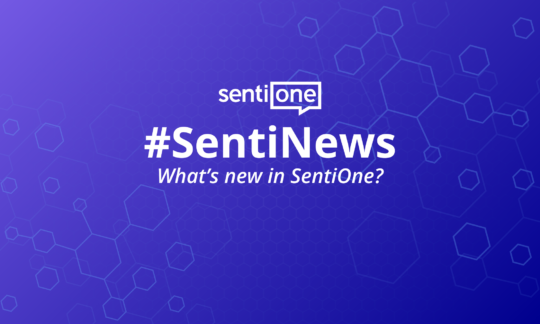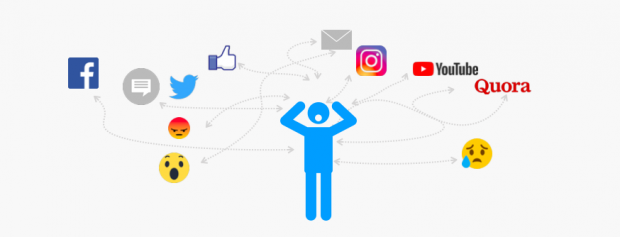2019 in Customer Service: a SentiOne retrospective
We’re continuing our 2019 retrospective with a look at some of the customer service trends and developments that defined the passing year. Read on to find out the conclusions we drew, as well as our recommendations for 2020.
Basic live chat is becoming obsolete
One of the main trends we observed in 2019 is the increased technical sophistication of the average consumer. As the generational shift marches on, Gen X and older segments get overtaken by millennials and Gen Z – people who grew up with modern technology. These people are not only well-versed in the use of computers and smartphones. Indeed, they expect a certain degree of sophistication in the tools and services they use.
As such, it is now time to bid farewell to traditional live chat solutions – they’re simply too limited. The consumer expects seamless transitions between text and voice chat, as well as features such as image and screen sharing. After all, the apps your customers use every day – Messenger, Whatsapp, Telegram – already have all of these features and more. As such, they’re taken for granted, which means their absence is all the more conspicuous.
Messaging apps dominate
Speaking of Messenger and its compatriots – they continue on their path to becoming one of the most important marketing vectors around. Many brands are already on board with reaching their customers through carefully designed Whatsapp messages. And why not? With average users spending much more time in WhatsApp than on Facebook, it’s no surprise market leaders do their best to ensure their presence and availability on such platforms.
This trend isn’t just important for the world of customer service – although it still remains the prime use of messaging apps in business. Many companies are experimenting with conducting marketing campaigns solely through WhatsApp, and this trend will continue gaining momentum in 2020.
Chatbots continue gaining in popularity
As more and more customers become comfortable with technology, chatbots see increased adoption among many brands. This, in turn, leads to more people being comfortable when interacting with conversational user interfaces.
Surprisingly, though, they aren’t only popular with the younger generation. According to a report published by Tidio, 44.0% of online shoppers aged 45-60 prefer using online chat and/or chatbots when purchasing online. This seems to disprove the popular belief that older segments of the population shy away from advances in technology. This is an important takeaway, especially as more and more brands promote their chatbots exclusively towards the younger segment of their audience.
Omnichannel more important than ever
Along with shifts in technological sophistication among consumers, we noted the continued trend of shifting purchase preferences. The wide availability of options for making purchases and researching products led to customers developing their own individual preferences when it comes to making purchase decisions – some prefer to look up reviews on YouTube, others learn about new products from their favourite Instagram influencer. As such, consumers are spread across different platforms and media they can be reached through.
This situation requires a specific approach, known as omnichannel. Omnichannel refers to offering a fully-integrated, consistent experience across all platforms and communication channels. If potential customers learned about your product from an Instagram post, that means you should be present on Instagram, ready to answer any question and providing an easy way for the customer to purchase your product. Do that for every platform your consumers use, and offer a unified, consistent experience for all of them – you’ll be an omnichannel expert in no time.
Of course, it helps if you use correct tooling. Our own React tool makes integrating communication channels a breeze – take a look for yourself!
Conclusions
The key takeaways for 2019 are:
- Ditch basic live chat…
- …in favour of WhatsApp and Messenger
- Older clients aren’t afraid of new technologies
- Omnichannel marketing is a must
2019 was a year of foreshadowing – although no major shifts took place, we did get to experience a taste of what the future will look like. Both marketing and customer service spaces are in a transitional period which is largely influenced by the same trends. Already the line between customer service and marketing is blurry; some activities could well be classified under both umbrellas. This process will likely continue for years to come. As for us, we’re eagerly awaiting new developments in both spaces.
While the increased interest in chatbots may come as a surprise to many, we certainly weren’t fazed. In fact, we spent a lot of time getting ready for this exact scenario – chatbots rule the customer service space right now. There was never a better time to get into the technology – and SentiOne Automate makes creating and deploying chatbots a breeze.



